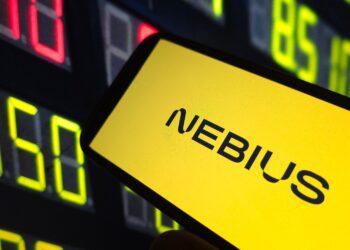Smart technologies will revolutionize how we build things, if we take advantage of them.
By Dusty Weis (Association of Equipment Manufacturers)
We´ve been told so often about the technology revolution, perhaps industry leaders have come to expect that any day now, the “Internet of Things” (IoT) will come storming across their factory floor like an invading robot army.
But the most intriguing revelation during the Association of Equipment Manufacturers’ recent Thinking Forward conference on the subject was not how any one innovation is reshaping the way society lives and works. It was that, while technology is still evolving at a historic pace, we’re still waiting for the first “smart” city —or “smart” manufacturer— to fully embrace the technology that’s available to them.
“We are not there yet,” says Dr. Larissa Suzuki, a renowned researcher, computer scientist and software engineer. “People are taking the human capital out of the equation.”
Considered a foremost expert on the paradigm-bending potential of the so-called IoT, Dr. Suzuki’s work engineering vast, highly-interconnected systems has been applied to streamline services and provide insights in banking, medicine and the city of London’s infrastructure.
All too often, she says, the question of how technology will change lives focuses too intently on the technology and loses sight of the people whose lives it would be changing. And she says that mindset could be particularly dangerous to the construction, farming and equipment manufacturing sectors, where companies have been slow to test the waters of the IoT.
The IoT concept is actually pretty straightforward. Technology is getting smaller, cheaper and more pervasive, while GPS, Wi-Fi and cellular data networks are growing exponentially. Therefore, it’s easier than ever to equip previously “dumb” everyday objects with “smart” technologies that track performance, monitor conditions and report data to a central source.
There’s no need to mark your calendar for some sci-fi future when the technology will be ready to change the world; Suzuki says it’s ready now.
What’s needed is human innovation and the will to put that technology to work in unexpected ways. And as the capital costs of innovation continue to decline, Suzuki believes fortune will favor the bold.
“Don’t be afraid of trying new things and new ways of interfacing with technology,” she told AEM’s Thinking Forward conference. And that starts with people. Here are just a few examples that are already reshaping industries and cities.
PREDICTIVE MAINTENANCE: MORE DATA, LESS DOWNTIME
Reacting to his “check engine” light in a classic episode of the Simpsons, Homer gasps, “Uh-oh, the tape must have fallen off,” before replacing a strip of electrical tape over the blinking indicator. Not surprisingly, the car breaks down a few moments later.
In some way or another, we’ve each repeated Homer’s mistake in our own lives, with often costly results. But on an industrial scale, in a world where data is cheaper and more readily available than ever, it’s possible that failures to collect and put to use information could be costing us billions in preventable breakdowns and downtime.
That’s where predictive maintenance is poised to make a major impact on equipment manufacturing—both on the type of equipment that’s being built and on the manufacturing process itself.
Whether it’s a single piece of industrial equipment or a factory that churns out thousands of them, Dr. Suzuki says that any system can be monitored for a near infinite number of performance metrics. By automating the data collection process through the use of IoT technology, manufacturers can develop a better understanding of how systems work, and when they will fail.
“Why would you wait for an asset to be faulty to try to do something about it?” she asked at AEM’s Thinking Forward conference. “If you can predict that a particular asset is outputting odd data, you can understand something is going on and you can better make decisions about replacing or updating that asset.”
According to the worldwide management consulting firm McKinsey & Company, widespread adoption of predictive maintenance technologies could reduce companies’ maintenance costs by 20 percent, reduce unplanned outages by 50 percent and extend machinery life by years. A report by the firm notes one airplane manufacturer that has already implemented IoT sensors in its business plan:
“By providing real-time data, the sensors immediately alert the manufacturer about potential problems, which makes it easy to conduct preventive maintenance and maximize uptime. Other sensors help with parts-inventory management. Together, these IoT enhancements have contributed to 9 percent revenue growth and a 30 percent increase in engine availability. That means airplanes spend more miles in the air and less time on the ground, consistently reducing overall operating costs.”
However, a McKinsey survey of business leaders demonstrated there is still a reluctance to make decisions based on these hard data troves. The most significant source of the disconnect goes back to Homer’s “check engine” light—most people still trust “good ol’ fashioned gut instinct” more than they trust exhaustive, objective data.
And until we put more faith in the numbers, it’s probably going to cost us.
VIRTUAL REALITY AND AUGMENTED REALITY: MORE THAN VIDEO GAMES
A manufacturer plunking down a whole lot of cash for a 3D virtual reality (VR) multimedia center might seem a little unorthodox from a conventional perspective.
Ordering 11 of them, like agricultural and construction equipment manufacturer Case IH, a unit of Case New Holland (CNH) did, is downright unheard of. But the initial investment paid for itself quickly, Case IH Vice President Jim Walker told AEM’s Thinking Forward conference.
Walker says the system allows engineers to manipulate computer designs in ways that have eliminated the need to build expensive prototypes the company once needed. In virtual reality, design teams can analyze assembly processes, inspect ergonomics and sightlines, simulate maintenance to ensure clearance for tools and conduct safety reviews. The VR software interfaces seamlessly with CNH’s computer-aided designs to allow engineers to hone their prototypes to within 97 percent accuracy in a digital environment. But Dr. Suzuki says that there are still traditionalists who write off virtual reality as the province of kids and video games.
While that’s where many of these technologies were developed, she says the potential applications are too numerous to count. “When your kids are playing games, they are driving an industry that is changing everything we do,” Suzuki says.
The technology behind the often-mocked Pokémon Go fad could, ultimately, turn industry conventions upside down as well. Using a simplified version of “augmented reality” that superimposed cartoon critters over the urban landscape, the mobile game prompted crowds of people to wander aimlessly throughout cities (and occasionally into traffic) in search of the mythical Pokémon.
But Dr. Suzuki and her team have worked to develop an augmented reality app that helps users find faulty components, not Pikachu. Her application of the technology envisions “smart” buildings where networked infrastructure pings maintenance crews when it’s in need of service, and augmented reality guides them to the problem component. It’s a short leap to see how such technology could be applied to farming and construction equipment. With the right software, Suzuki says the cameras on many modern smartphones are capable of identifying the components of an engine or other complex systems and projecting schematics, data and repair instructions over it. If the machines are networked to the phone via Wi-Fi or Bluetooth, technicians would be able to view real time performance metrics and analysis.
WE ALL WORK IN TECH NOW
With all the attention being focused on how technology will revolutionize business models, it’s easy to lose sight of the fact that people are still the most important component in the IoT. But as increased automation has historically reduced the number of people working in fields like construction, farming and manufacturing, those people are understandably concerned that the latest advances might put them out of work.
That’s not necessarily the case, says Longbow Securities Senior Vice President Eli Lustgarten, a research analyst and market advisor for industrial manufacturers the world over.
Lustgarten envisions an evolving workforce where notions like “unskilled workers” will become obsolete. If IoT technology becomes a part of every job, then, essentially, every worker will have to be skilled in using technology.
“It’s basically businesses and corporations that have to recognize that they need to internally develop skills to meet their needs,” Lustgarten says. “That will ultimately put pressure on universities, and all the way down through elementary schools.”
Rather than fret over the cost of providing workers with a basic background in technology, Lustgarten says manufacturers should consider it an investment in their workforce. As evolving technologies enable workers to be more productive, he says it’s an investment that should pay for itself over time.
That’s how the city of London is viewing its launch of a new program intended to help construction companies train their workers in emerging technologies.
“We’re not saying they have to become computer scientists,” she says. “They just have to understand how to interface with technology in a way that will make them more efficient on the job site.”
That can also mean actively listening to users and addressing their specific needs. In London, Dr. Suzuki says the infrastructure construction community expressed an interest in gaining access to the vast troves of project data the city maintains.
So Suzuki and the Greater London Authority developed the London Infrastructure Mapping Application, which consolidates construction and infrastructure plans through 2050 and displays projects on a map. Utilities, developers and municipal departments contribute to the database, allowing them to identify opportunities to co-locate projects and deliver infrastructure improvements jointly.
Instead of having a power utility dig up and repair a street one week and a water utility dig up that same street a week later, Dr. Suzuki says the mapping application reduces costs for infrastructure providers and disruptions for citizens. And it happened because the people developing technology tailored their approach to people.
* Dusty Weis is AEM’s strategic communications manager, covering the impact that new and emerging technologies will have on the construction, agriculture and manufacturing sectors. Email him at dweis@aem.org or follow him on Twitter @dustyweis.













